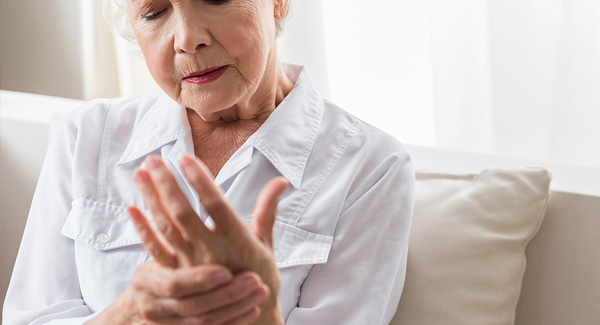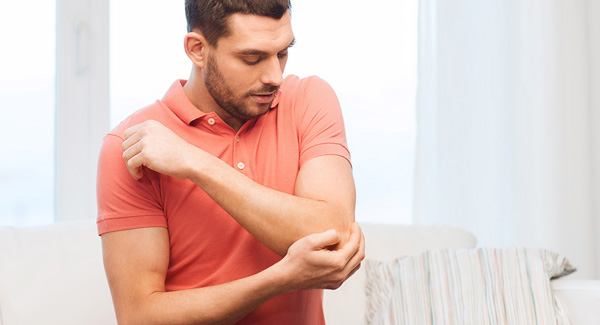Hand and Wrist Anatomy
The hand and wrist are made up of many different bones, muscles and ligaments that enable a wide range of movements.
Bones
The following are the main structures of the hands:
The wrist is formed where the two bones of the forearm – the radius (the larger bone on the thumb side of the arm) and the ulna (the smaller bone on the pinky side) – meet the carpus. Rather than a single joint, the wrist is actually made up of multiple joints where the bones of the arm and hand meet to allow movement
The carpus is formed from eight small bones collectively referred to as the carpal bones. The carpal bones are bound in two groups of four bones:
- the pisiform, triquetrum, lunate and scaphoid on the upper end of the wrist
- the hamate, capitate, trapezoid and trapezium on the lower side of the hand.
Other bones of the hand are:
- the metacarpals – the five bones that comprise the middle part of the hand
- the phalanges (singular phalanx) – the 14 narrow bones that make up the fingers of each hand. Each finger has three phalanges (the distal, middle, and proximal); the thumb has two.
Joints are formed wherever two or more of these bones meet. Each of the fingers has three joints:
- metacarpophalangeal joint (MCP) – the joint at the base of the finger
- proximal interphalangeal joint (PIP) – the joint in the middle of the finger
- distal interphalangeal joint (DIP) – the joint closest to the fingertip.
Each thumb has two joints.
The surfaces of the bones where they meet to form joints are covered with a layer of cartilage, which allows them to glide smoothly against one another as they move. The joints are enclosed by a fibrous capsule that is lined with a thin membrane called the synovium, which secretes a fluid to lubricate the joints.
Ligaments and Tendons
The ligaments are tough bands of connective tissue that connect the bones to support them and keep them in place. Important ligaments of the hand are:
- collateral ligaments – strong ligaments on either side of the finger and thumb joints, which prevent sideways movement of the joint
- volar plate – a ligament that connects the proximal phalanx to the middle phalanx on the palm side of the joint. As the joint in the finger is straightened, this ligament tightens to keep the PIP joint from bending backward.
- radial and ulnar collateral ligaments – a pair of ligaments which bind the bones of the wrist and provide stability
- volar radiocarpal ligaments – a complex web of ligaments that support the palm side of the wrist
- dorsal radiocarpal ligaments – ligaments that support the back of the wrist
- ulnocarpal and radioulnar ligaments – two sets of ligaments that provide the main support for the wrist.
Tendons are bands of connective tissue that attach the muscles to the bone enabling the muscles to move the bones.
The main tendons of the hand are:
- superficialis tendons, which pass through the palm side of the wrist and hand, and attach at the bases of the middle phalanges. They act with the profundus tendons to flex the wrist and MCP and PIP joints.
- profundus tendons, which pass through the palm side of the wrist and hand, and attach at the bases of the distal phalanges. They act with the superficialis tendons to flex the wrist and MCP and PIP joints. They also flex the DP joints.
- extensor tendons of the fingers, which attach to the middle and distal phalanges and extend the wrist, MCP, PIP and DP joints.
- flexor tendons, nine long tendons which pass from the forearm through the carpal tunnel of the wrist. They diverge in the palm, where two go to each finger (one attaches at the DP and one at the MCP) and one goes to the thumb.
- extensor pollicis brevis and abductor pollicis longus, which run from the muscles in the top of the forearm and enable movement of the thumb
Rings of connective tissue, called pulleys hold tendons of the fingers close to the bone.

Stay in the Know. Live in the Yes.
Get involved with the arthritis community. Tell us a little about yourself and, based on your interests, you’ll receive emails packed with the latest information and resources to live your best life and connect with others.


